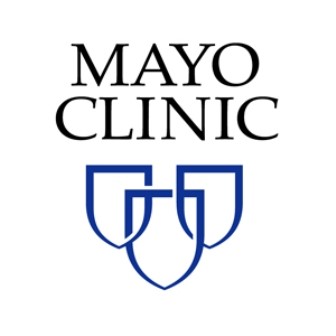How Grassroots Efforts and Solid Planning Helped Overcome Silos and Bring Healthcare Plastics Recycling to Mayo
Mayo Clinic is a nonprofit organization committed to clinical practice, education, and research, providing expert, whole-person care to everyone who needs healing. Their Minnesota campus provides care to hundreds of thousands of people from the United States and around the world every year, and was named one of the best hospitals in the nation for 2016-2017 by U.S. News & World Report.
Mayo Clinic’s Healthcare Plastics Recycling Program began in 2013. Glen Goodsell, Recycling Coordinator, had been getting requests from staff to recycle healthcare plastics and with the addition of a baler (originally purchased to recycle beverage bottles), a grinder, and a willing plastics buyer, all the pieces were in place to begin an expanded plastics recycling program. From 2016-2017, the program saw a 78% increase in recycling in their #5, #6 and #7 plastics. There was also a 9% increase in #1 and #2 plastic recycling in that time period. While your system may look very different from Mayo Clinic’s, the expert advice their team has to offer can nevertheless provide valuable support for your recycling efforts.
Check out this video of Mayo Clinic’s Recycle Center
While your system may look very different from Mayo Clinic’s, the expert advice their team has to offer can nevertheless provide valuable support for your recycling efforts.
Change from the Inside Out
Much of the impetus for creating a plastics recycling program at Mayo Clinic’s Rochester campus came from staff in clinical and research laboratories. People felt it wasteful to put clean, single-use plastics in the trash. Once the Mayo team was ready to formally launch healthcare plastics recycling, their approach was to go from lab to lab to explain the process and bring staff up to speed. Communication to individual labs was particularly helpful in the research environment where laboratories often operate independently. The group tapped into existing communication channels among clinical laboratories to streamline program communication where possible.
After their initial program discussion, the local lab teams were then put in charge of their own micro-programs; they managed their own bins, bags, and other supplies, and transported materials to designated collection areas. This effort by laboratory and patient care staff at hundreds of locations streamlined the movement of materials for Environmental Services staff, who pick up the material from the collection areas. Staff training was done in person and the sustainability team looked at the specific materials each location was dealing with to help tailor their program specifically to them. All this staff involvement created strong program engagement and it also spawned creative ideas to move Mayo’s recycling program in new and exciting directions (such as recycling #1 PETE plastic disposable mouse cages!)
Look Before You Leap
The biggest piece of advice the Mayo team would offer someone starting a new program is to make sure the details are considered before beginning. For example, finding the right vendor partner(s) is crucial. Mayo uses different vendors for different waste streams in order to meet their needs, and also partners with Ability Building Center to provide meaningful work for people with disabilities (similar to an agreement between Kaiser Permanente and Goodwill.) Having a partner that understands and supports your program goals is crucial and, in Mayo’s case, some of their partners actually help them market other material streams.
Make sure you truly understand your particular local market and all its players. This can impact your program in a variety of ways, from being able to source your recycling bags locally (as Mayo does through a supplier who uses 60% recycled content) to being eligible for municipal grants and other support in your area. Don’t start collecting until these steps are complete.
It’s also important to remember the story of the tortoise and the hare. Start your program focused on one stream or area of your hospital, refine your process, and then expand once you have found a winning approach. Don’t try to do too much at once. The same could be said for stakeholder communication: bear in mind how many different groups there are to communicate with and try to find regular, creative ways to keep them in the loop over time, rather than planning one generic blast of information. At Mayo these ongoing communication initiatives include an annual recycling update summary, intranet postings, recycling program information housed on the waste management and recycling intranet website, and prominently displayed posters with material photos in clinical areas.
Make it Work
At the end of the day, every hospital is different, and the best way to approach a new recycling program is to find ways to work with what you have and create a program that works for your specific situation. As Mayo expresses it, “Environmental Health is Human Health,” and all the small steps can pay off in a big way, bringing your hospital closer to its mission of improving patient and community health.
To learn more about recycling at Mayo, contact Glen Goodsell, Recycling Coordinator, or Angie Dalenberg, Education Coordinator for Recycling and Waste.

